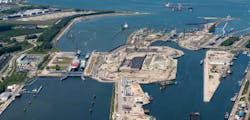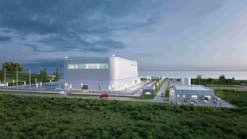Blastr and Lhoist Collaborate on Low Carbon Lime and Dolime Supply to Reduce Scope 3 Emissions of Future Finland Steel Plant
Blastr Green Steel (Blastr) and Lhoist, a provider of lime, dolime, and mineral solutions, have signed a partnership agreement to develop a scalable decarbonized value chain for ultra-low CO2 steel production in Europe.
Both companies aim to reach an agreement on the future supply of Lhoist's LEVEL|GREEN low-carbon lime and dolime, which will reduce the Scope 3 emissions of the plant by up to 50 kg CO2 per ton of steel and support Blastr's sustainability targets.
Blastr aims to produce 2.5 million tons of ultra-low CO2 steel annually in its future steel plant in Inkoo, Finland. The agreement intends to evaluate the supply of lime and dolime, essential raw materials for steel production, to Blastr.
"Using low CO2 raw materials is of utmost importance in our ambitious journey to produce steel with CO2 emissions as low as 300 kg per ton corresponding to 90% lower CO2 emissions throughout the value chain," said Mikael Lindvall, Chief Technology Officer at Blastr.
The partnership will include technical support for selecting lime and dolime products and implementing them into the steel production process. Lhoist will also evaluate an investment project for a terminal responsible for supplying the products to the steel plant and support Blastr's permitting process throughout the procedure.
The partners also plan to sign a supply agreement in the future, depending on Blastr's final investment decision for the steel plant.
"Lhoist can offer supply chain security thanks to its European-wide network of plants,” said Antti Kaikkonen, Country Manager at Blastr Finland. “The partnership with Lhoist enables us to jointly explore the most optimal supply solutions as well as to investigate the most efficient methods to use the lime and dolime in the steel plant."





